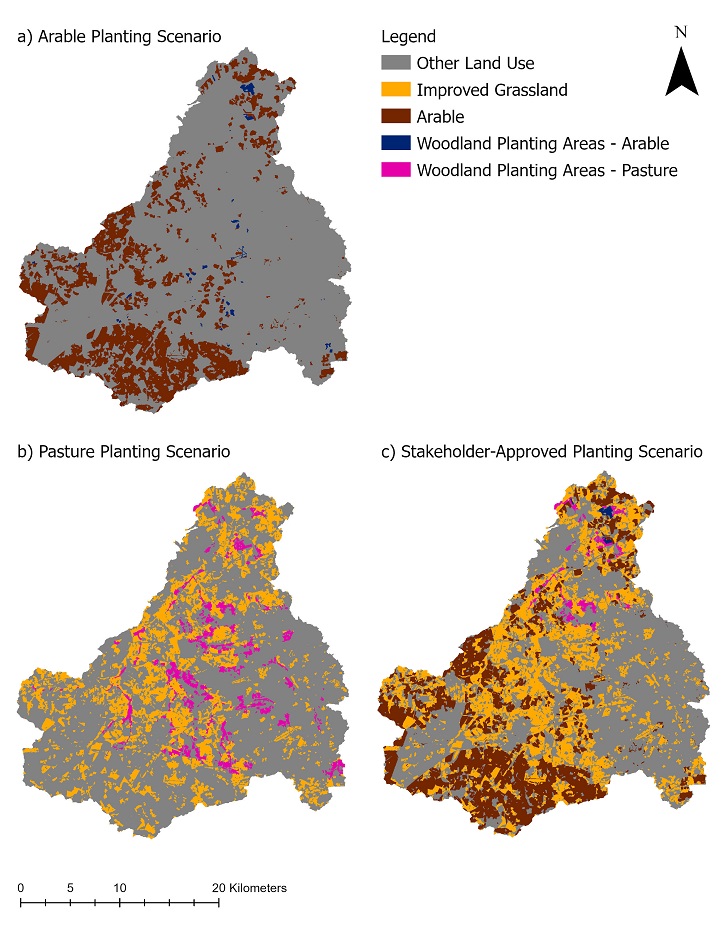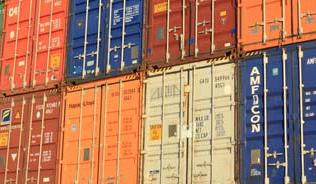The climate crisis affects us all and is one of the biggest global challenges of present generations. Carbon sequestration plays a key role in climate change mitigation and is at the forefront of UK environmental and agricultural policy. Key strategies of the UK Government’s 25 Year Environment Plan include the planting of 11 million trees, largely on low quality agricultural land, and the implementation of the Environmental Land Management Scheme (ELMS), centred around paying “public money for public goods”.
There are several factors affecting the support for enhancing ecosystem service delivery within the farmer/landowner communities. Farming is first and foremost a business, and although many are willing, particularly in young farming communities, land use changes are unlikely to occur unless they are affordable/profitable. Secondly, the rich cultural heritage of farmers can be tied to “productivist” values and resistance to fundamental changes to the traditional practices. Hence, in practice, geographical features are not the only factors determining the suitability of farmland for afforestation and the will of the landowners must be accounted for.
Inspired by the above, I wanted to calculate the real-world carbon sequestration potential of woodland planting on UK agricultural land. Additionally, I wanted to know where afforestation was welcome in rural communities and if it was economically feasible compared to traditional farming practices. This required social data on the opinions of rural community stakeholders, which due to the efforts of the LANDWISE Project, was available for the Loddon catchment area. In 2020, the LANDWISE Project ran a social research workshop with stakeholders of the Loddon catchment community to identify areas approved for natural flood management measures, including woodland planting. Using ArcGIS, InVEST Carbon Model, and results from the LANDWISE Project workshop, I created three woodland planting scenarios: an arable, pasture, and stakeholder approved scenario which represented planting broadleaved woodland on farmland in the Loddon Catchment over a 50-year time horizon (Figure 1).
 |
| Figure 1. The three woodland planting scenarios |
How much carbon can be sequestered and is it affordable?
The highest annual carbon sequestration rate from woodland planting is on arable land and could reach 4.02/tC/ha/yr. Carbon sequestration in pasture land is 6.8% lower at 3.75 tC/ha/yr. However, due to the prevalence of low-quality land, planting on pasture land has the greatest overall potential and could sequester up to 668 thousand tonnes of carbon over 50 years at the catchment scale, compared to 77 thousand tonnes of carbon in the arable scenario. This is the equivalent of reducing the population of Berkshire by 50 thousand or 5,700 people. Considering the preferences of stakeholders reduces total carbon sequestration significantly to 180 thousand tonnes of carbon (or the equivalent of reducing the population by 13,200 people).
The economic analysis found even with the support of government subsidies, woodland planting on agricultural land would operate at a loss across all common traditional farming practices. Most interestingly, lowland pasture farming (predominantly beef and sheep farming) currently work at more of a loss (-£237.60/ha/yr) than woodland planting (-£9.99/ha/yr), hence, afforestation of lowland pasture land maybe a more economically attractive option for farmers.
Interesting, but is it that simple?
Although on paper a transition to woodland creation for carbon sequestration is an economically sensible opportunity, a deeper look into the likely current and future operation of lowland pasture farms complicates matters. In practice, farmers may not want, or be able to, convert to forestry. When excluding the value of unpaid labour and assuming that the land is owner-occupied, lowland pasture farming no longer operate at a loss, explaining why it continues to be viable. Moreover, the skillset needed for grazing operations is often provided by unpaid family workers, whereas the skills required for conversion to carbon forestry may not be "freely" available, therefore no longer making afforestation economically attractive, particularly for farming households fitting the "cash-poor, asset-rich" stereotype.1
The reliance on government subsidies is a common economic agricultural issue. In England, EU Direct Payments represented 61% of farm profits, making it difficult for domestic forestry markets to compete without similar government support. However, the EU Direct Payments will be phased out by 2025 in England and replaced with ELMS. If ELMS reduces the overall amount of payments and ties these to the delivery of specific environmental goods such as carbon sequestration, conversion to forestry could become far more attractive, if not the default option on marginal land due to the economic unfeasibility of agriculture.
Furthermore, considering the value of carbon sequestration is a common method used to evaluate the trade-offs between climate regulation services and food production. However, by only focusing on carbon sequestration, there is a risk of under representing the value of concurrent services. For example, a valuation of air quality regulation, biodiversity, and recreational co-benefits provided by afforested areas in the Woodland Carbon Code estimated an additional social value of £344-£785 per tonne of carbon sequestered. Therefore, if government subsidies are adjusted to account for all the services provided by woodlands, the financial outlook of their establishment may look very different.
What does this mean for the Loddon?
It is unrealistic that all suitable land in the pasture scenario will be planted due to the influence of farmer attitudes on participation in afforestation schemes. Therefore, it is more probable for woodland planting to occur on lowland pasture farmland within the stakeholder approved scenario. This would equate to an expansion in forest cover of 0.74%, far below the 4% target required to reach the UK’s goal of net zero by 2050. Therefore, if the rural communities in the Loddon catchment are to play their part in mitigating the climate crisis, a range of further measures must be applied.
Jessica Flack graduated from the University of Reading in MSc Environmental Management in 2021. Her dissertation is published in the Central European Forestry Journal (2022). After working for 6 months as Environment Project Coordinator in Tanzania. She is about to start working as Lead Adviser for Natural England.
References
- Redman, G., 2020: John Nix Pocketbook. 51st ed. Melton Mowbray, The Andersons Centre, 303 p.





